Inksights Blog : The Reputation Ink Blog
How to Measure the ROI of Your Law Firm’s PR
Every law firm marketer has been asked this question — often by a managing partner or practice leader:
“What’s the ROI of our firm’s public relations? Did that article bring in any new clients?”
It’s a fair question, but it’s also the wrong question.
In professional services, the sales cycle is long, complex and deeply relationship-driven. Prospective clients don’t read one article or see one press release and immediately decide to hire your firm for a seven-figure litigation matter. Instead, they build trust gradually, over time, through multiple interactions across different channels.
The value of law firm PR isn’t transactional — it’s transformational. It shapes perceptions, builds trust and creates leverage that makes every other part of your business development strategy work better. Measuring PR ROI means looking beyond individual articles to understand how visibility and credibility influence the entire client journey.
Thomson Reuters’ Legal Executive Institute confirms this, noting that brand, reputation and perception are the three most important factors in a client’s hiring decision. A strong media profile increases the perceived safety and value of a firm in the minds of decision-makers.
The Wrong Question: “Did This Article Bring in Leads?”
When law firms focus on whether a single media placement generated direct leads, they set PR up to fail. It’s like judging a closing argument by a single sentence rather than the whole case. Why? Because prospective clients rarely take linear paths from article → phone call → signed engagement letter.
This kind of last-click thinking works for e-commerce, not for sophisticated legal services. The real question isn’t, “Did this article bring us business?” — it’s, “How is PR moving prospects closer to hiring us?”
High-stakes legal matters are complex, high-risk decisions that involve multiple decision-makers — often a general counsel, a CEO or CFO, board members and sometimes even outside advisors. Each of these stakeholders must believe in your firm’s expertise and reputation before they’ll even consider reaching out.
Trust is built gradually, through a series of positive encounters with your firm over time. Research from Harvard Business Review reinforces this: buyers in trusted-advisor industries value cumulative reputation signals and third-party validation over individual marketing touchpoints.
Similarly, Best Lawyers found that nearly half of legal buyers cite awareness from rankings and media coverage as the reason for shortlisting a firm, even before direct contact.
A prospective client might:
- Read an attorney’s bylined article in Law360 or Bloomberg Law that demonstrates deep subject-matter knowledge.
- Notice your firm’s name in the news for winning a landmark case or being quoted on a hot legal issue.
- See several of your attorneys ranked in Chambers or Best Lawyers, signaling peer recognition and excellence.
- Attend a conference where one of your partners delivers a compelling presentation on a relevant legal trend.
- Come across your LinkedIn posts sharing practical insights and thought leadership.
Each of these touchpoints adds another layer of familiarity and confidence. By the time the client faces a pressing legal need, they already feel like they “know” your firm and trust your ability to deliver.
That’s when the phone call or email happens — not because of a single article or award, but because PR has laid a foundation of credibility that made your firm the safe, obvious choice.
The Better Question: “How Is PR Shortening Our Business Development Cycle or Building Authority?”
Public relations in the legal industry works by paving the road to new client relationships. It does this by:
- Putting your firm in front of the right audiences at the right moments.
- Demonstrating expertise and reducing perceived risk for decision-makers.
- Equipping your business development team with content and proof points that turn conversations into engagements.
Instead of asking if one article “brought in a client,” measure how PR is:
- Shortening your business development cycle by building awareness and trust before the first meeting.
- Helping more prospects say “yes” by providing third-party validation such as awards, rankings and media coverage.
- Strengthening your positioning so that when prospects compare you to other firms, you clearly stand out.
PR Alone Isn’t Enough: Building a Complete Visibility Ecosystem
One of the biggest misconceptions about PR is that it can single-handedly generate leads. In reality, PR is just one piece of a much larger visibility puzzle. Even the best media placements won’t deliver results if prospects encounter gaps or friction when they try to learn more about your firm.
Think of PR as the front door to your firm. It sparks interest and creates awareness — but what prospects find once they step inside matters just as much.
For PR to reach its full potential, it must be supported by a cohesive visibility strategy across all touchpoints, including:
- Your website: Clear messaging, updated attorney bios, up-to-date firm news and easy navigation that make it simple for prospects to understand who you are, what you do and the value you bring.
- Social media presence: Consistent posting and engagement that extends the life of media coverage and keeps your firm top of mind. When appropriate, posts should drive traffic to your website.
- Thought leadership content: Blog posts, client alerts and resources that demonstrate depth of expertise beyond a single article or quote.
- Speaking engagements and events: Opportunities for attorneys to connect directly with audiences and build trust face-to-face.
- Email marketing: A way to nurture relationships over time and keep contacts informed of your firm’s latest insights and successes.
- Award wins and rankings: Third-party recognition, such as Chambers USA, Best Lawyers and Law360 Awards, which act as powerful credibility builders and reinforce your firm’s market position.
When all of these channels work together, they amplify the impact of PR. A prospect might first encounter your firm through a Wall Street Journal article, then visit your website to learn more, see your attorneys actively sharing insights on LinkedIn and finally attend a webinar or conference where they meet you in person.
This multi-touch journey creates a seamless, reinforcing experience that builds trust and confidence. Without that ecosystem, even the most impressive media coverage risks being a missed opportunity, because there’s no clear next step for prospects to take.
This is the “halo effect” — each placement adds credibility, and together they create a perception of authority that influences buying decisions.
The Three Buckets of PR Value
The impact of PR can feel intangible, but when you break it down, it becomes much easier to see and measure. PR delivers value in three key areas: building awareness, establishing trust and creating leverage.
Think of PR as a journey. First, people need to know you exist (awareness). Next, they need to believe in your expertise (trust). Finally, they need reasons to choose you over competitors (leverage). These three stages form the backbone of PR’s true value.
1. Awareness: Name Recognition
Visibility is the first step. Your prospects can’t hire you if they’ve never heard of you.
Strategic PR places your firm in front of targeted audiences, such as industry publications, legal trade media and business outlets. The goal is to ensure your firm is top of mind when a legal need arises.
Example:
A general counsel reads your attorney’s bylined article in Law360 or hears them quoted in Bloomberg Law. Six months later, when they need specialized counsel, your firm feels familiar — not like a cold call.
2. Trust: Third-Party Validation
In a crowded marketplace, credibility is currency. Media coverage acts as third-party validation — a powerful form of social proof. Trusted publications signal that your attorneys are not only knowledgeable but respected by peers and journalists.
PR also builds confidence with referrers — other attorneys and professionals who may send business your way. The more they see your firm consistently recognized, the more likely they are to refer high-value matters.
Media visibility is even more crucial in the era of generative AI, as large language models heavily rely on trusted media sources to generate responses. Your clients are just as likely to ask ChatGPT for information on potential law firms to hire as they are to search on Google.
Example:
A boutique litigation firm is featured in a Chambers USA ranking and profiled in The American Lawyer. Even if a prospective client hasn’t worked with the firm yet, these signals reduce perceived risk and make it easier to move forward.
3. Leverage: Extending PR’s Shelf Life
PR doesn’t just generate earned media — it creates powerful assets for marketing and business development.
Articles, interviews and media mentions can be repurposed into blog posts, social content, client alerts, proposals and RFP responses. This extends the shelf life of every placement and amplifies its value.
When used effectively, PR content becomes a powerful tool for business development. It gives partners and marketing teams tangible proof points — like articles, interviews and media mentions — that they can share with prospects to reinforce your firm’s expertise and credibility, making it easier for potential clients to feel confident when choosing your firm.
Example:
An attorney uses a recent Wall Street Journal quote in a pitch deck for a corporate client. That third-party credibility tips the scales in favor of your firm over a competitor.
Metrics That Matter
Measuring PR impact starts with aligning your metrics to your firm’s business development goals. The goal isn’t just to count clips — it’s to track how PR activity moves prospects closer to hiring your firm and strengthens your positioning over time.
Here are a few meaningful ways to track performance:
- Placements by audience: Focus on securing coverage in outlets that matter most to your target industries, referral sources and ideal clients.
- Coverage quality: Look beyond raw volume (although volume matters). Consider message alignment, prominence (front-page vs. small mention) and share of voice compared to competitors.
- Message consistency: Are your firm’s key themes and differentiators showing up regularly and clearly in your media coverage?
- Engagement signals: Monitor activity that shows prospects are taking action after encountering your firm in the media, such as:
- Website traffic from media links or referrals
- Increases in branded search traffic — when prospects Google your firm or attorney names after reading an article
- Website visits stemming from AI-driven search queries (e.g., ChatGPT, Perplexity or Google’s SGE), where PR coverage is often surfaced and cited
- Social shares and engagement on LinkedIn or other platforms
- Inbound inquiries where prospects reference a specific article, podcast or ranking
By tracking these metrics over time, you can connect PR activity to tangible business development outcomes. This helps demonstrate to firm leadership how visibility and credibility aren’t just abstract concepts — they are drivers of pipeline growth and client acquisition.
Bringing It All Together
The ROI of PR isn’t about counting clips or chasing vanity metrics. It’s about building a reputation ecosystem that accelerates growth, shortens business development cycles and de-risks the buying decision for your prospects.
When you stop asking, “Did this article bring us a client?” and start asking, “How is PR supporting our new business pipeline?”, you unlock the real power of public relations.
What’s Next: Follow the PR ROI Series
This post is the first in our new blog series, “The ROI of Law Firm Public Relations.”
Over the coming weeks, we’ll explore how law firms can measure, communicate and maximize the impact of PR. We’ll cover how to align PR with business development goals, track meaningful metrics and demonstrate the value of visibility and thought leadership to firm leadership and partners.
Our goal is to help you move beyond vague notions of “awareness” and provide you with practical strategies for demonstrating how PR drives growth, strengthens positioning and supports client acquisition and retention.
Don’t miss out — sign up for our INKsights newsletter to get the full series delivered straight to your inbox, along with other insights and resources designed to help your firm protect and grow its most valuable asset: its reputation.
Related Law Firm Content
Strengthening the Profile of a Florida-Based Full-Service Law Firm
Reputation Ink | Oct. 3, 2025
Elevating a National Litigation Firm’s Profile Through Strategic PR and Thought Leadership
Reputation Ink | Jun. 17, 2025
Crafting attorney bios that instill trust, build relationships and boost reputation
Reputation Ink | Apr. 22, 2025













